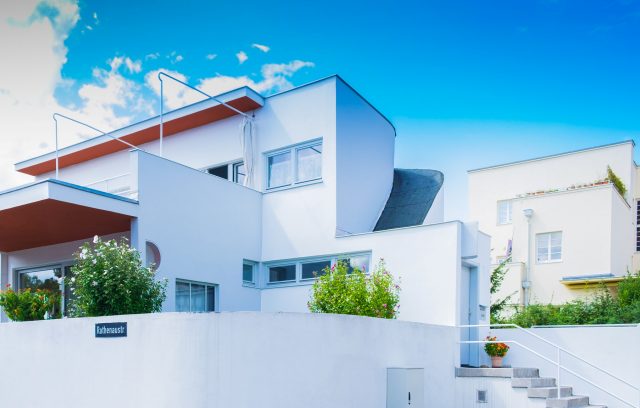 Maria Victoria Lopez, sjo
Maria Victoria Lopez, sjo
In 1919, in the immediate wake of the devastation wrought by World War I, an architect named Walter Gropius, one of the pioneering maestros of modern architecture, founded an art school that combined fine arts with crafts and eventually architecture, with a minimalist approach to design that combined all of it with contemporary technology under the maxim "form follows function". Starting in eastern Germany - first in Dessau, then in Weimar, and finally a third school in Berlin - this school's aesthetic and philosophy had a huge impact on the arts, design (especially furniture and household objects), and architecture not just in Germany but the rest of Europe and beyond - and one whose impact is still felt a century later.
Sadly, the increasingly ascendant Nazis viewed its work as "degenerate art", and the last school was finally shut down in 1933, though acolytes then became successful in spreading Bauhaus design beyond Germany's borders (three masterful examples being Wassily Kandinsky, Paul Klee, and Mies Van der Rohe). Now in 2019, the various organisations and tourism boards are pulling out all the stops to celebrate the many extant examples of Bauhaus (whose major locations are now collectively a UNESCO World Heritage Site), and to promote a yearlong programme of events surrounding it.
First off, here are some of the finest key examples in the country:
 ezypix
ezypix
Dessau: Ground Zero
As the site of the original school (top left), this small city in eastern Germany's Saxony-Anhalt state (90 minutes southwest of Berlin and an hour north of Leipzig) naturally became the incubator for Bauhaus design - starting with the school building itself (you can even spend the night in one of its dorm rooms), and including other 1920s structures such as the Meisterhäuser, the residences of senior staff (including the reconstructed home of Gropius, above); the Dessau-Törten Estate of public housing; the Stahlhaus (Steel House); the Fieger Haus; the Kornhaus traditional German restaurant on the bank of the Elbe River; and the Arbeitsamt (employment office), now housing the Public Security and Regulations Authority). There will also be a new Bauhaus Museum opening on 8 September.
Weimar
This small city (pop. 65,000) in Thuringia about 90 minutes from Leipzig was an influential centre of the Enlightenment, and remains full of gracious 17th- and 18th-century architecture. And in the early 20th century it also became a Bauhaus nexus, because it was here that Gropius and others founded the Bauhaus movement. However, just three landmarks remain, including the former Art College and the School of Arts and Crafts (both still in operation as the Bauhaus-Universität Weimar). The exteriors are Art Nouveau, but a number of interior spaces (above) and murals are definitely Bauhaus, and walking tours are offered. The only purely Bauhaus design here is outside the city centre: the small, cubic Haus am Horn residence, built for a 1923 exhibition and today also used by the university and open to the public. There is, however, an excellent new Bauhaus Museum here, opening on 6 April. Distances: three hours from Berlin; an hour 40 minutes from Dessau; two hours 40 minutes from Alfeld; two hours from Dresden.
 bbuong
bbuong
Berlin
The third and last city in which the Bauhaus schools were located (here, for just one year before Nazi pressure shut it down), it was also home to various movement architects and designers, and the main site here is the distinctive school campus itself in the central Mitte district - now the Bauhaus Museum Archive (above, now being renovated and reopening in May, with a temporary exhibition open to the public in the meantime in Charlottenberg). Other sites include the AEG Turbine Factory, the Mies van der Rohe House, and the Erich Hamann Bittere Schokoladen, a chocolate shop and factory. Finally, a half hour northeast of Berlin, the small city of Bernau is home to the ADGB Trade Union School, the second largest Bauhaus project, meant to train union members in labour law, industry, management, and economics.
 Mike Reiss
Mike Reiss
Alfeld
In this charming Lower Saxony town of 19,000 (a 2 1/2-hour drive west of Dessau and four hours from Berlin), one of the major landmarks is the Fagus Factory, Walter Gropius' first big project (1911-1913), with one of its innovations being large windows to allow natural light to come in, instead of the enclosed, claustrophobic factories of old. This factory of shoe lasts factory (the moulds around which a shoe is constructed) is now a UNESCO World Heritage Site and though still in operation is also open for tours.
 Stuttgart-Marketing GMBH
Stuttgart-Marketing GMBH
Stuttgart
Another seminal hub of the Bauhaus is the capital of Baden-Würtemburg state, where the main exemplar is the 21-building housing estate Weissenhofsiedlung 1927 (of which eleven buildings survived World War II), designed by the iconic Swiss architect Le Corbusier and 16 others under the direction of Mies van der Rohe and restored in the 1980s. This complex and the movement's legacy are also being celebrated by a multimedia exhibit at the Staatsgalerie from 7 June through 20 October 20: Weissenhof City: From the History and the Present to the Future" delves into the history and the current thinking on modernism present in the city today. Then from mid-November through February 2020 it will host "The Bauhaus Files: A European Project".
Other destinations with Bauhaus buildings include Hamburg, Hesse, North Rhine-Westphalia, and Rhineland-Palatinate. Get the full list here.
More info: Bauhaus100.com.
Comments